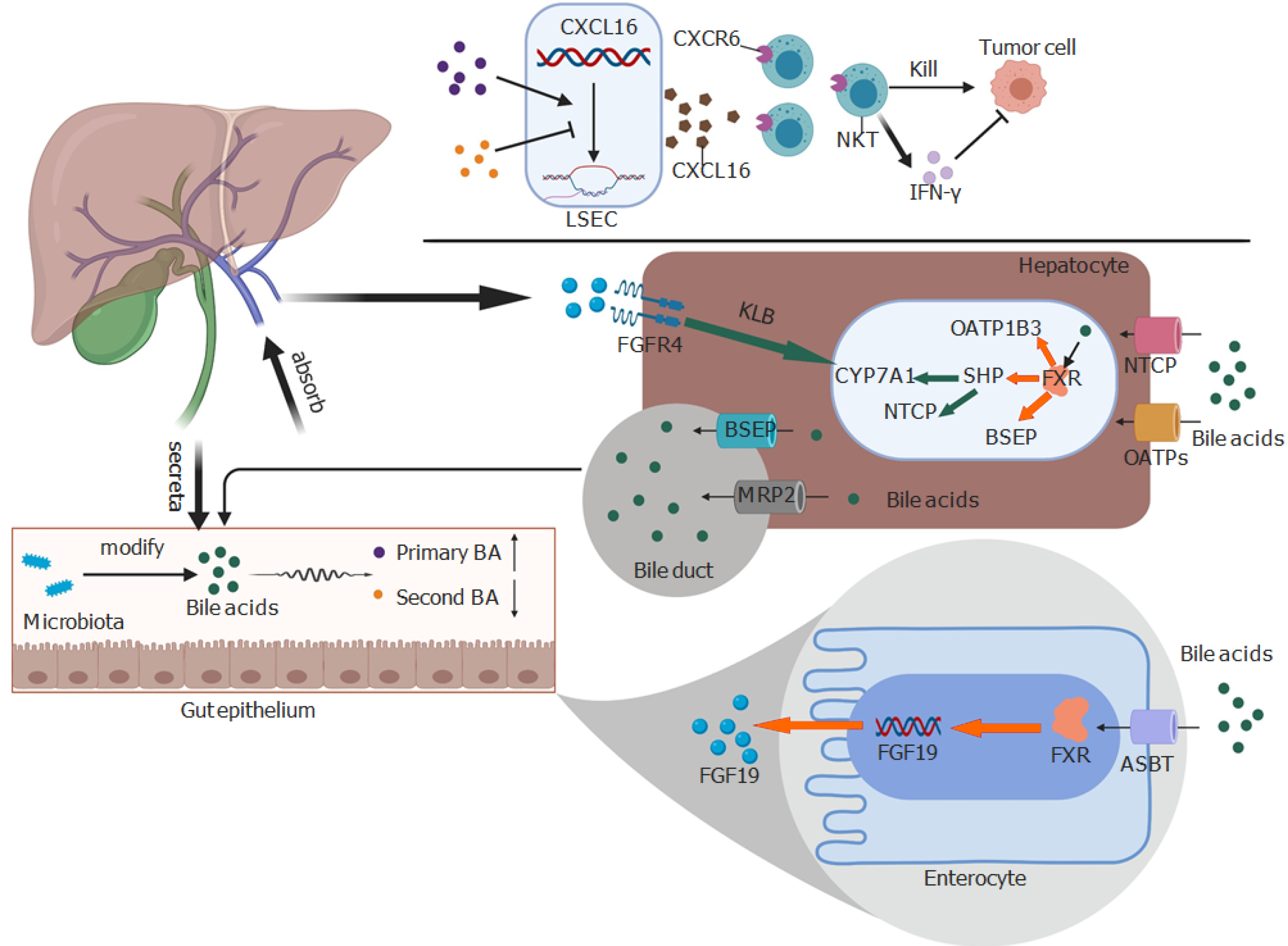Copyright
©The Author(s) 2021.
World J Gastroenterol. Jun 14, 2021; 27(22): 3010-3021
Published online Jun 14, 2021. doi: 10.3748/wjg.v27.i22.3010
Published online Jun 14, 2021. doi: 10.3748/wjg.v27.i22.3010
Figure 1 Bile acids play bidirectional action between the liver and the gut microbiome.
Bile acids can upregulate CXCL16 on liver sinusoidal endothelial cells to induce the accumulation of CXCR6+ natural killer T cells, which kill tumor cells directly or through interferon-.The farnesoid X receptor improves the expression of fibroblast growth factor 19 (FGF19) in the enterocyte after being activated by bile acids. FGF19 is the ligand of FGFR4 and can suppress the expression of cholesterol 7α-hydroxylase with the help of Klotho beta. The presence of Klotho beta can activate FGFR4. In other words, bile acids can activate the farnesoid X receptor to increase the expression of bile salt export protein, organic anion transporting polypeptides 1B3, and small heterodimer partner. However, small heterodimer partner can suppress the activation of cholesterol 7α-hydroxylase and Na+-taurocholate cotransporting polypeptide. Red and green arrows indicate positive and negative effects, respectively. NKT: Natural killer T; BA: Bile acid; IFN-: Interferon-; BSEP: Bile salt export protein; FGF19: Fibroblast growth factor 19; FGFR4: Fibroblast growth factor receptor 4; FXR: Farnesoid X receptor; KLB: Klotho beta; NTCP: Na+-taurocholate cotransporting polypeptide; SHP: Small heterodimer partner; ASBT: sodium-dependent bile acid transporter; CYP7A1: Cholesterol 7α-hydroxylase; MRP2: Multidrug resistance-associated protein 2; OATPs: Organic anion transporting polypeptides; LSEC: Liver sinusoidal endothelial cells; OATP1B3: Organic anion transporting polypeptides 1B3.
- Citation: Shao JW, Ge TT, Chen SZ, Wang G, Yang Q, Huang CH, Xu LC, Chen Z. Role of bile acids in liver diseases mediated by the gut microbiome. World J Gastroenterol 2021; 27(22): 3010-3021
- URL: https://www.wjgnet.com/1007-9327/full/v27/i22/3010.htm
- DOI: https://dx.doi.org/10.3748/wjg.v27.i22.3010









